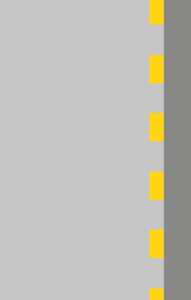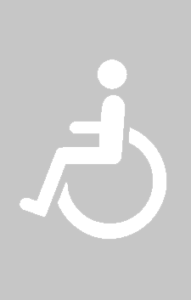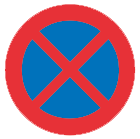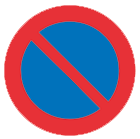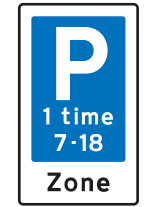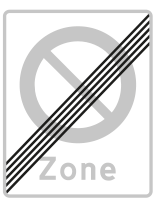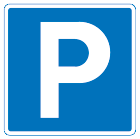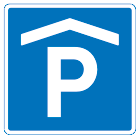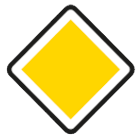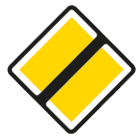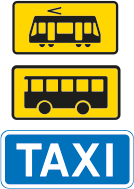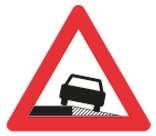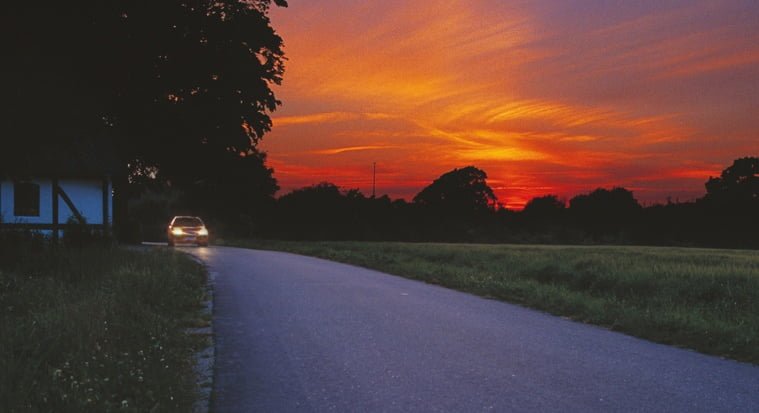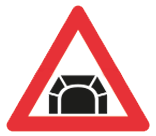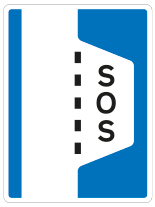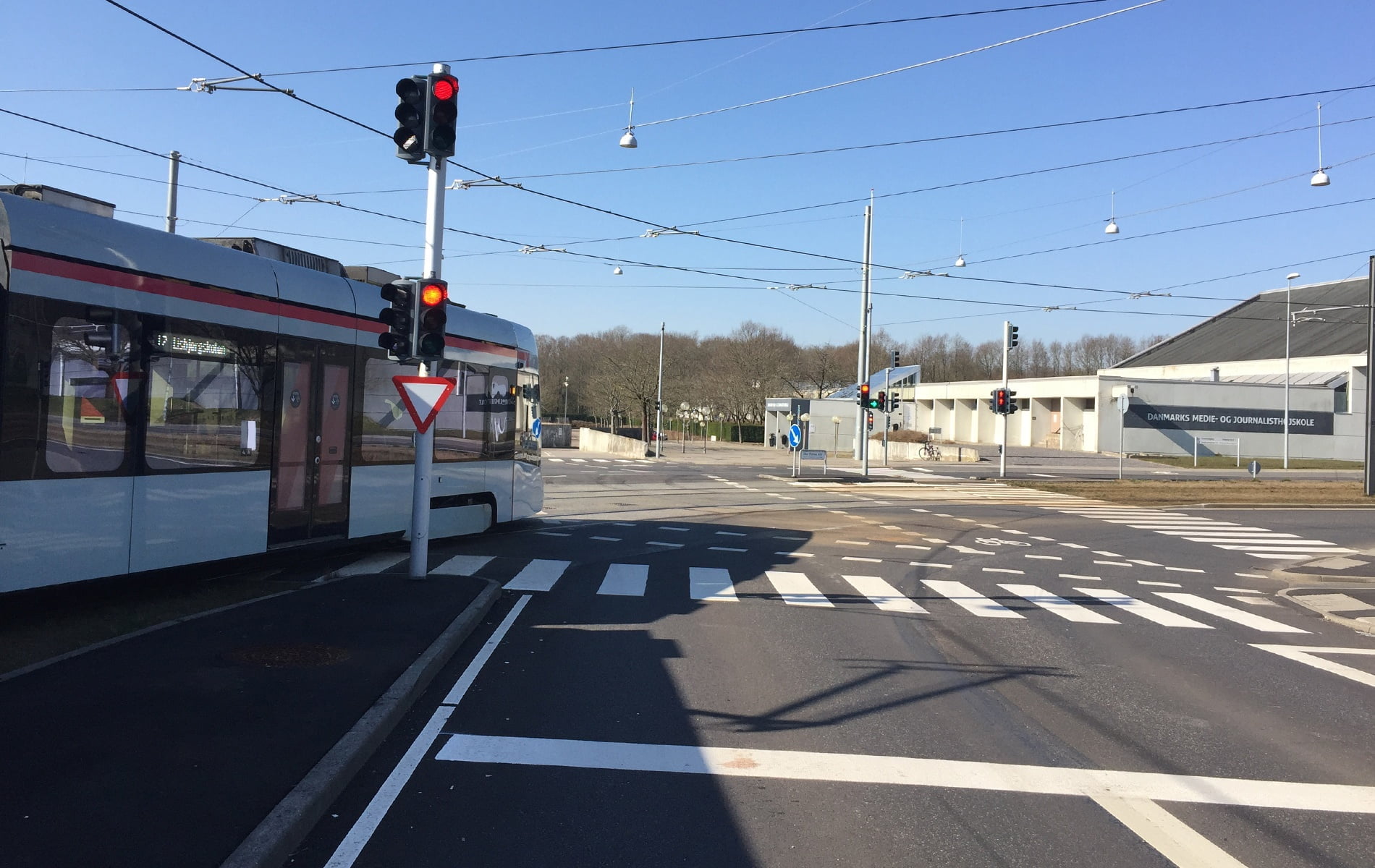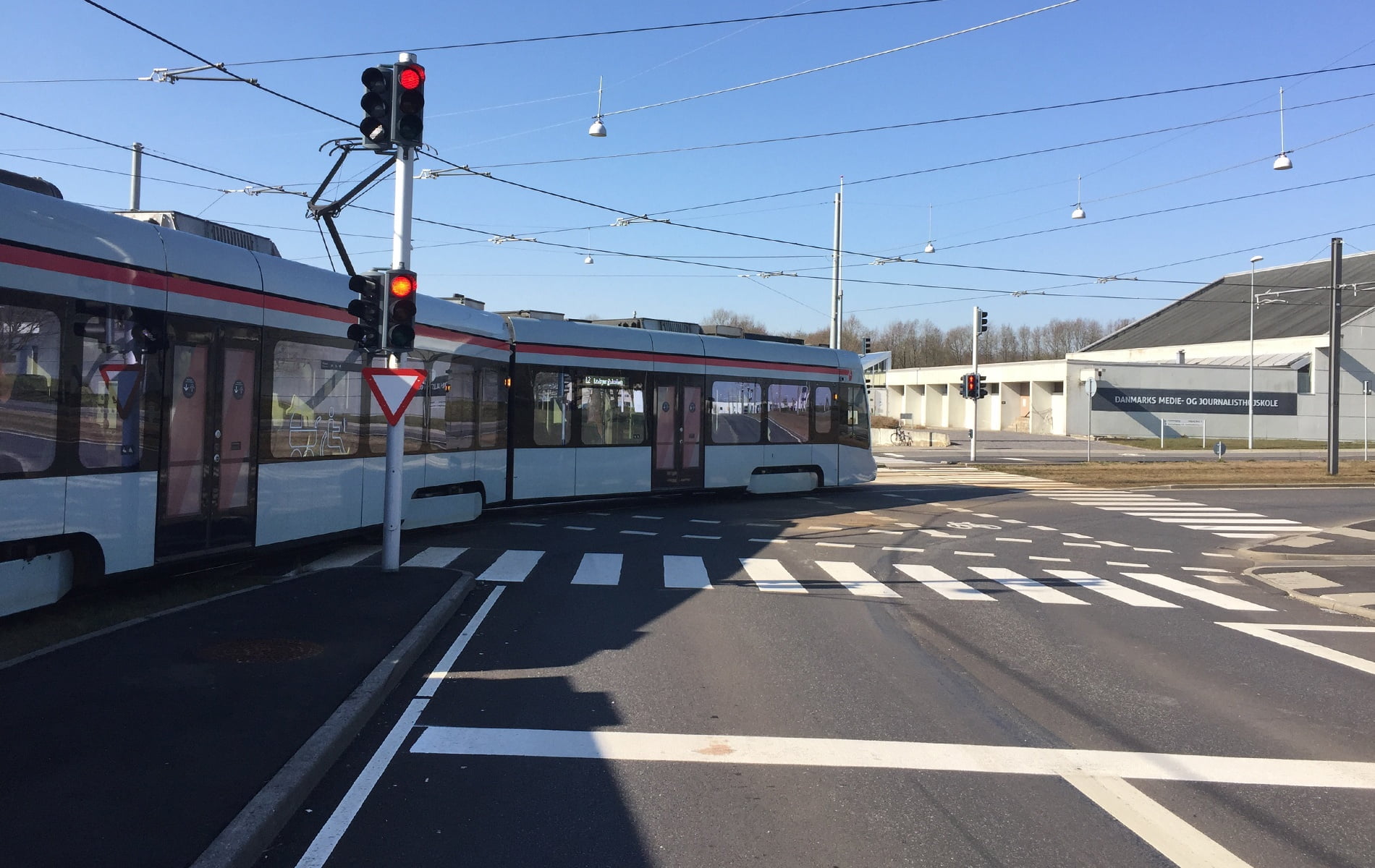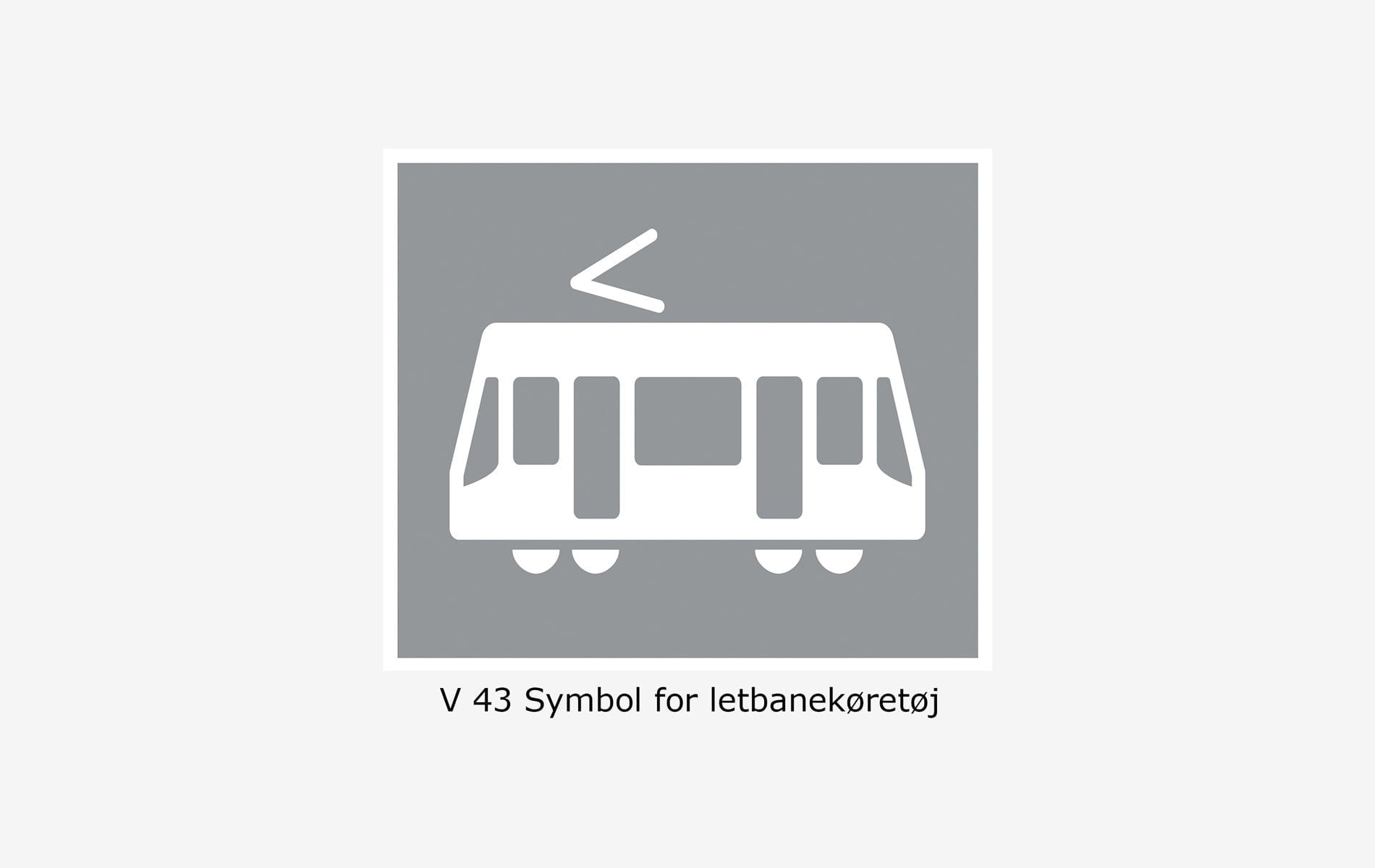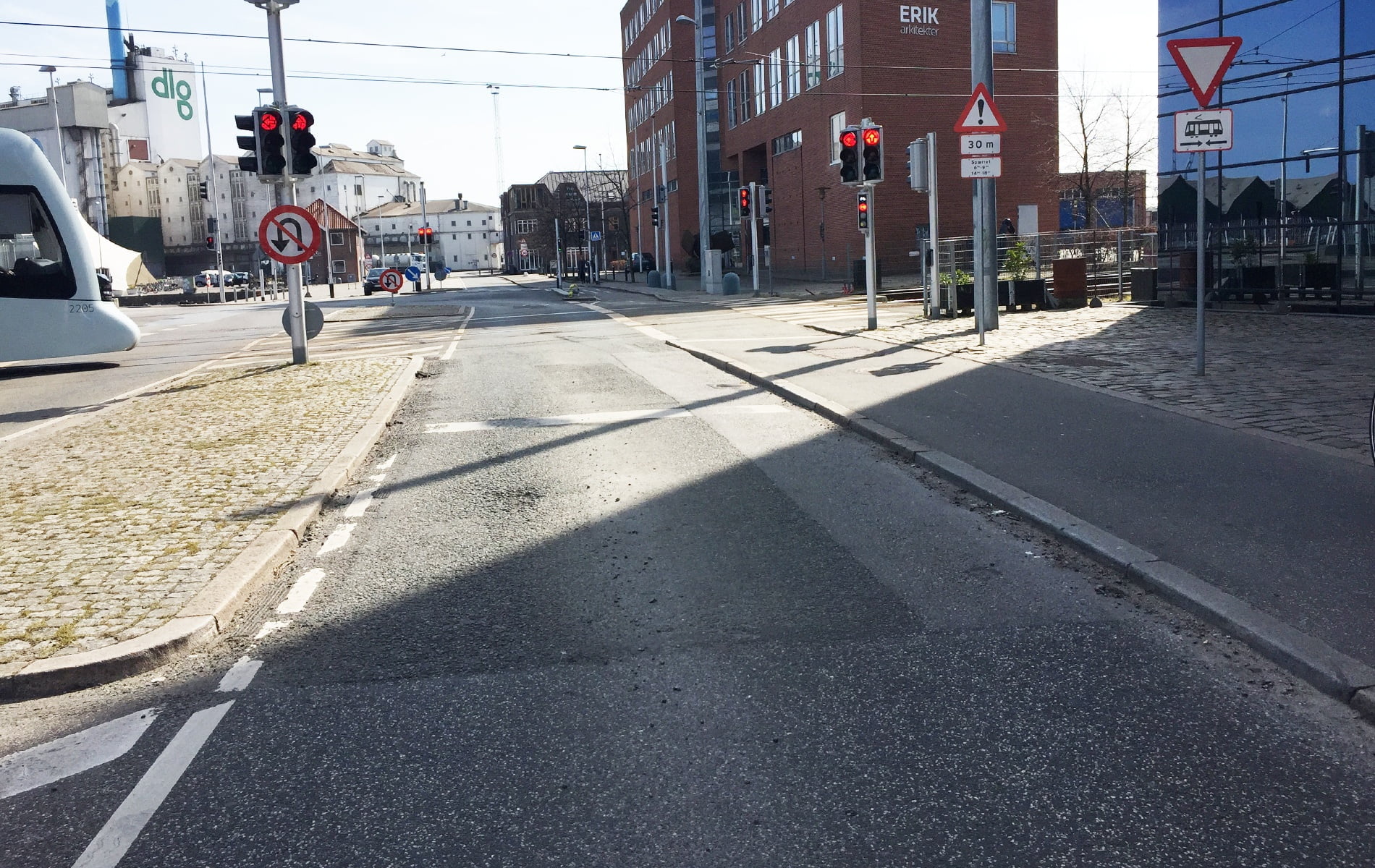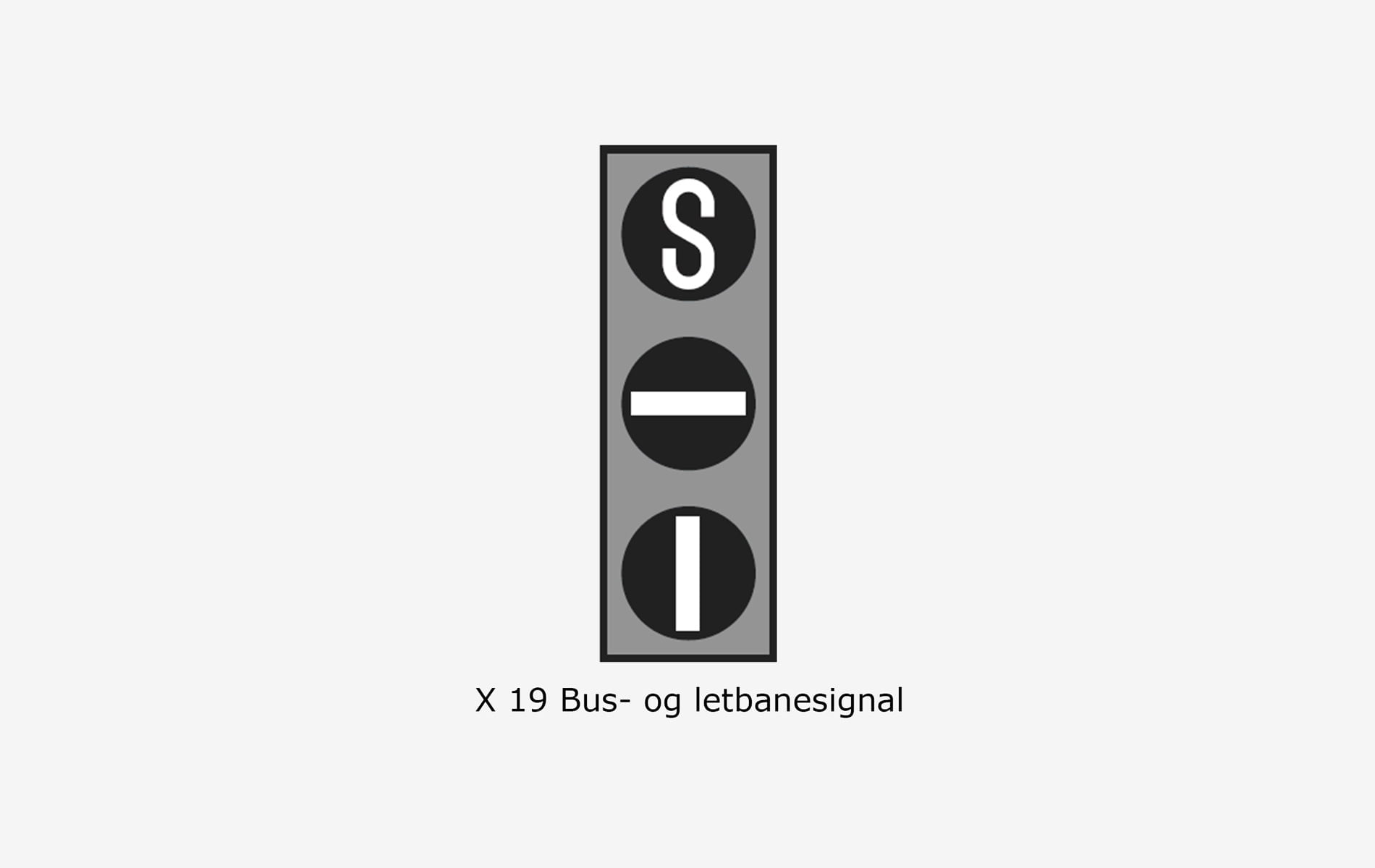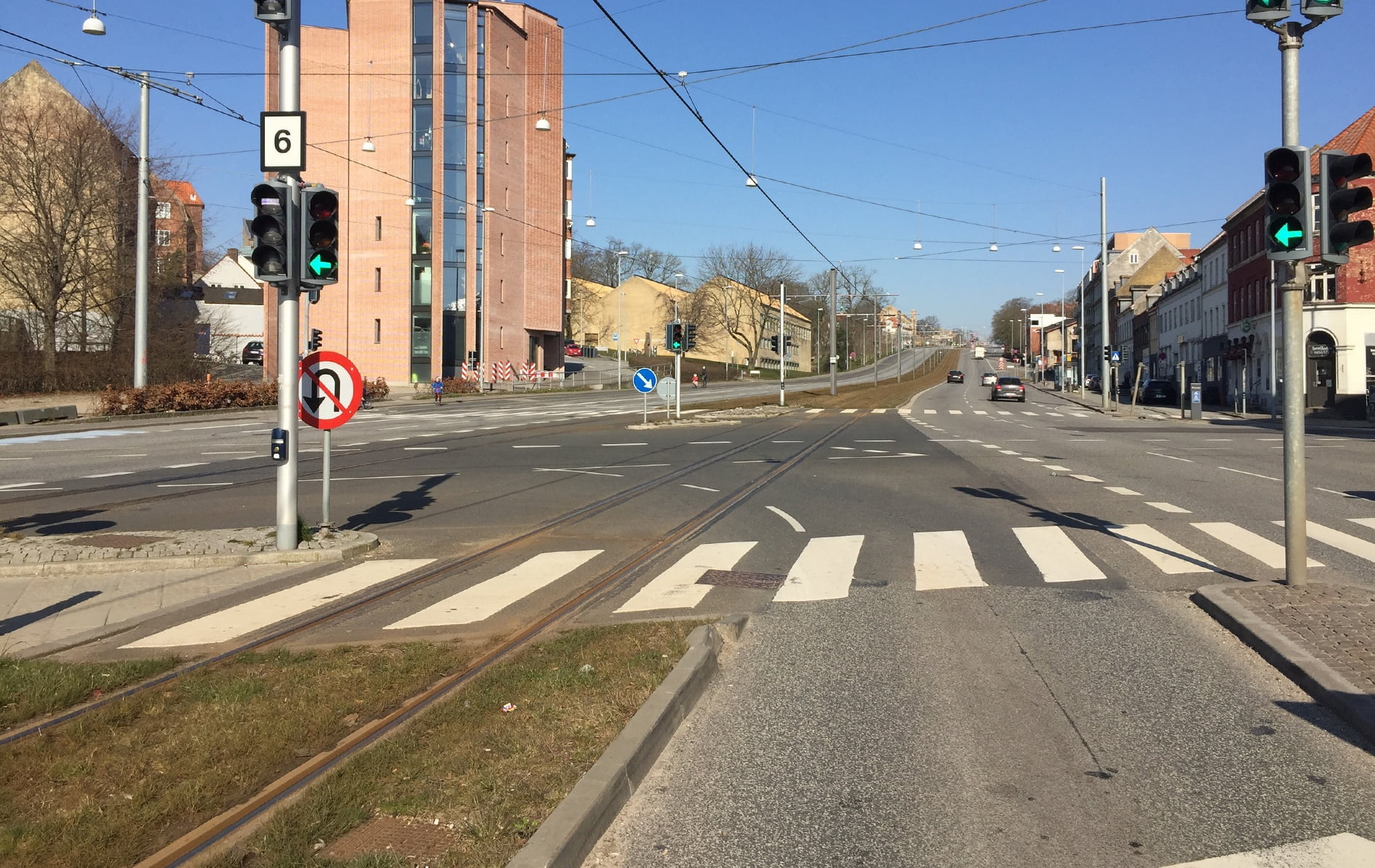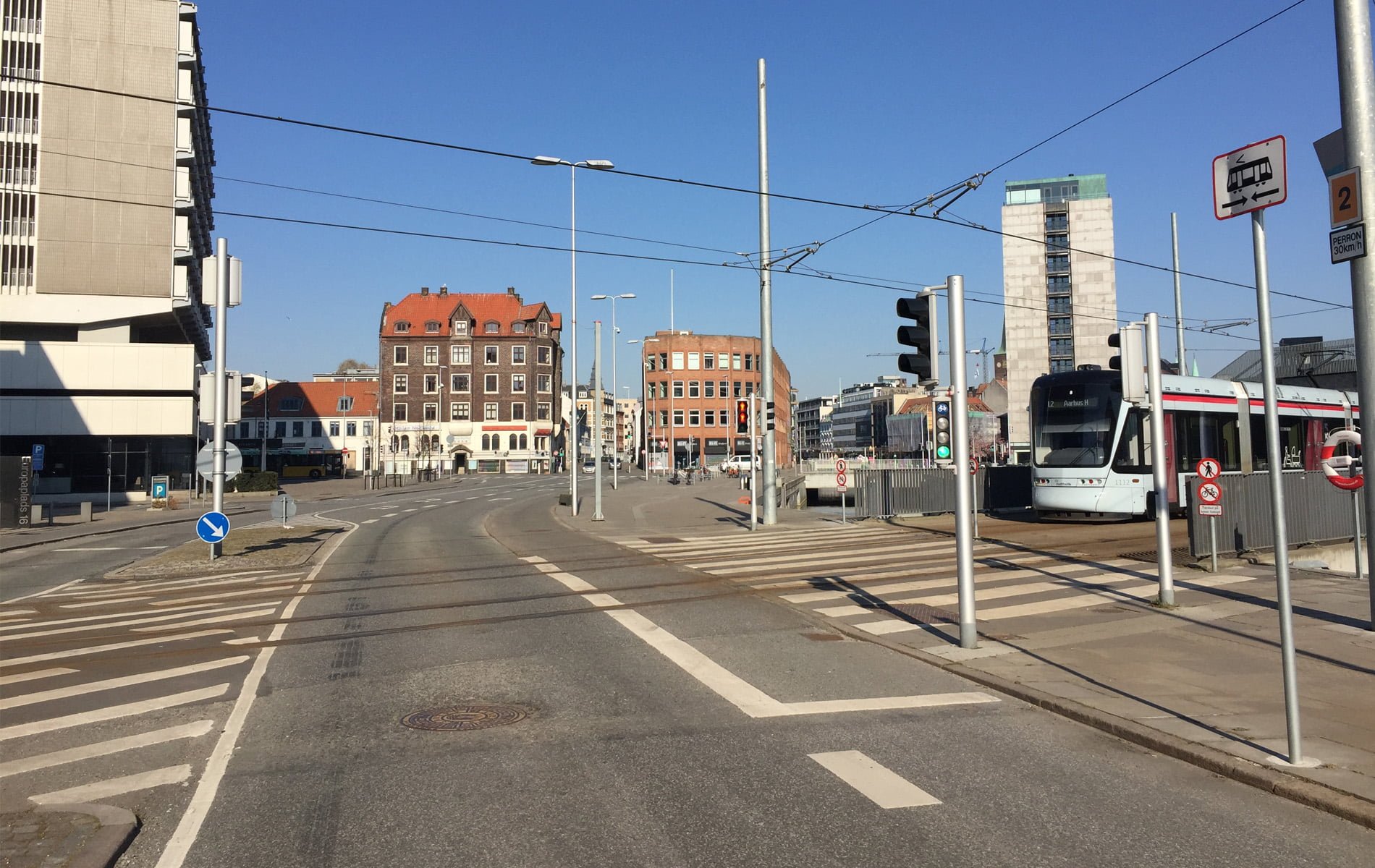Passenger car
Driving school
theory book
to category B
Sections 7.18 - 7.21: The final manoeuvres on the way
18. Parking and parking
Risks and accidents
If you're looking for a parking space, you're concentrating and may forget to pay attention to other factors. Some road users just get tired of looking and park their car without taking into account other drivers' ability to orientate themselves. Risky situations can also arise if the parker doesn't take into account that other drivers may be surprised by the situation. They may expect traffic to continue at a steady pace. This situation is sometimes the cause of accidents. Also, when performing a parking manoeuvre, do it at a suitably low speed so that you have control of the steering. Collisions with parked cars happen mainly on dual carriageways in cities - and often in the dark. Cyclists, motorists and moped riders are all involved in this type of accident. Serious accidents rarely occur during the parking manoeuvre itself, but there are many accidents with material damage alone.
Parking is any voluntary parking of a vehicle with or without a driver. However, stopping for less than three minutes, stopping for loading and unloading of goods or persons is not considered parking. A vehicle that is parked because it is unable to continue driving under its own power or is unable to continue driving safely due to an accident or technical fault is considered parked 18 hours after it has been parked. Stopping and parking must not be done in such a way that it can be a danger or inconvenience to traffic. As far as possible, it must be done outside the carriageway. You must ensure that mandatory anti-theft devices are activated. When opening doors, loading or unloading, you must ensure that there is no danger or unnecessary inconvenience to others. Outside of densely populated areas, car parks are often located next to the road. Here, you should preferably use the parking spaces on the right-hand side. If you stop or park on a track or less than 2 m from a track in the road, in a harbour or similar, you must not walk further away from the car than you have time to move it if you see a train. If you park a car (without trailer) at the roadside in a densely populated area in the dark, it is sufficient to switch on the parking lights and the rear light facing the centre of the road. Special parking regulations may apply locally. For example, it may be permitted to park part of the vehicle on the pavement. You must set and affix a parking disc or purchase a parking ticket where this is mandatory.
Orientation and manoeuvring
Stopping and parking - how to do it:
- While looking for a parking space, you should always keep in mind that there are other road users besides yourself to consider.
- Keep a suitably low speed and look behind you before slowing down further or stopping to see if you can park. Signal to stop with stop or turn signals.
- Is the space big enough - and is it legal to park there? And can you do so without causing undue inconvenience or obstructing traffic?
- Judge the distance to places that you must keep a certain distance from (see "Stopping and parking prohibited" and "No parking").
- Park the car as you learnt in the closed practice area.
- If you park uphill at a kerb, you may want to turn the front wheels all the way to the left, if you park downhill at a kerb, you can turn them all the way to the right so that the car is pressed against the kerb instead of rolling downhill.
- Apply the handbrake and put the car in gear if necessary.
- Check for cyclists, pedestrians or others before opening the car door.
- Make sure you don't tempt anyone: remove the ignition key, activate anti-theft protection and lock the car!
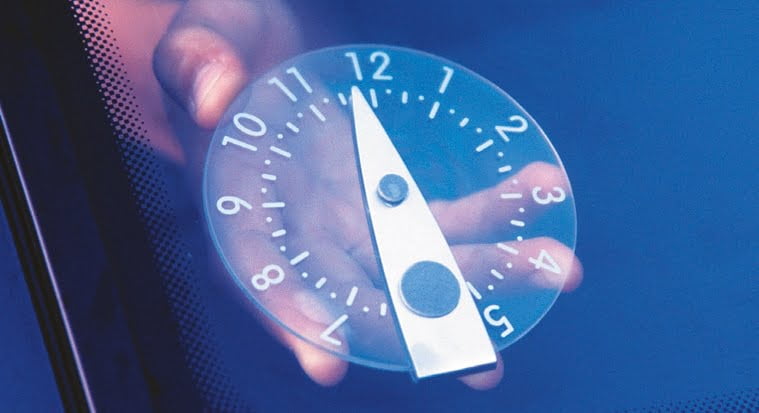
In places where parking is only allowed during certain time periods, you need to set the parking disc. You set it to the end of the quarter in which you start parking. This means that if you start parking at 11.35 am, you set the pointer to 11.45 am.
- Parking indicates that parking is permitted on the side of the road or in the area where the sign is located. If there is a parking restriction, it must be indicated on the type of sub-sign used for parking bans or on a sub-sign that applies to specific vehicles. For example, if the sub-sign shows a lorry symbol and the word permitted, the parking restriction does not apply to cars and vans. If the sub-sign shows a lorry symbol and there is no text, parking with cars and vans is prohibited.
Stopping and parking prohibited
There are some places where stopping and parking is prohibited, even if it is not signposted. This applies in these locations:
- On a pedestrian crossing or closer than 5 metres in front of the crossing.
- Closer than 5 metres before the exit from the cycle path.
- At intersections or within a distance of 10 metres from the edge of the transverse carriageway or, where the carriageway and cycle path merge, from the nearest edge of the cycle path. (this is always permitted in car parks).
- Closer than 5 metres from the beginning of a barrier line at intersections.
- Next to a barrier line if there is less than 3 metres between the car and the barrier line and there is no dotted line to the right of the barrier line.
- On a motorway bridge, viaduct or tunnel.
- On a railway or other level crossing.
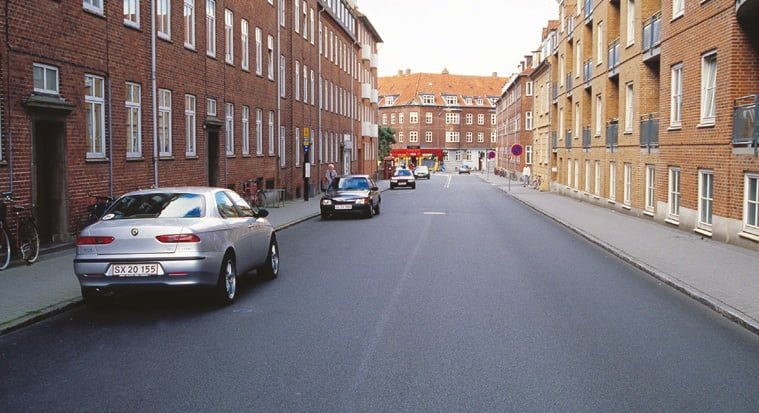
Stopping and parking is prohibited on the left-hand side of the road, except on one-way and less busy roads.
- On or near a hilltop.
- In or around a confusing bend in the road.
- In a crawlspace.
- In a marked space for taxis.
- On the entire marked stretch of road at a bus stop. And if there are no kerb markings, you must stop at least 12 metres before or after the stop sign.
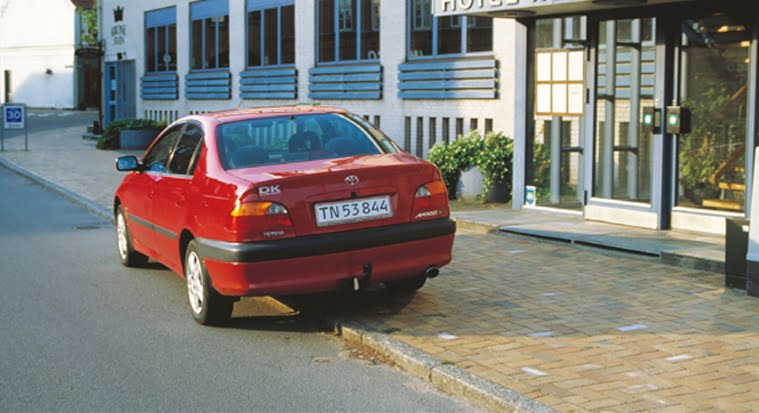
Stopping and parking is prohibited on footpaths, cycle paths, central reservation, ramps, barriers, etc. and generally on pavements.
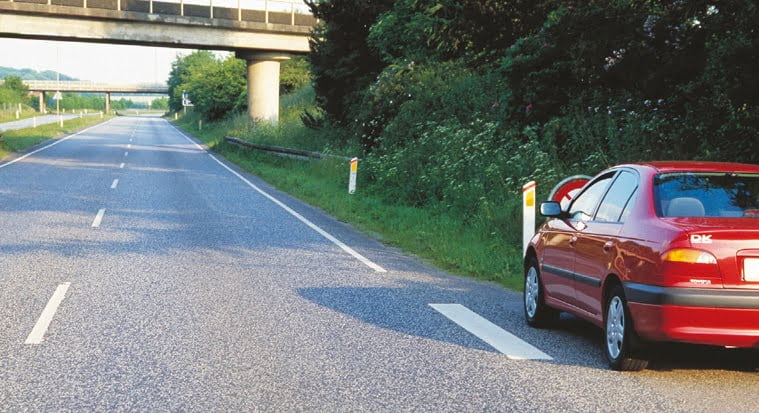
Stopping and parking is prohibited if the vehicle covers traffic signs or signals.
No parking
In other places, only parking is prohibited, even if it is not signposted:
- Closer than 30 metres from a railway crossing.
- In front of property entrances and exits or in such a way that access and exit is difficult.
- Next to another vehicle parked on the roadside, except for two-wheeled bicycles, mopeds or motorcycles without a sidecar.
- So close to another vehicle that you can't get to it or drive away from it.
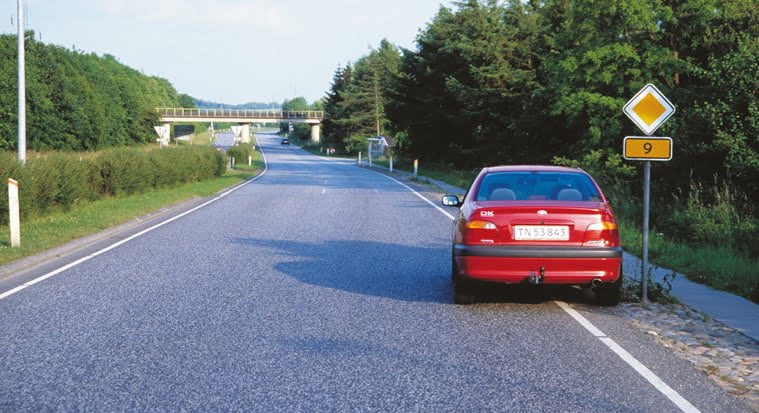
Parking is prohibited on the carriageway of main roads outside densely populated areas.
19. Driving in the dark and during headlight switch-on time in general
Risks and accidents
In darkness and twilight, or if you're driving towards a low sun, orientation is greatly reduced. The same applies if you are dazzled by oncoming traffic. Risky situations can arise if you drive too fast for the visibility and lighting conditions. It can be difficult to judge speed and distance in these conditions because there are no visible landmarks.
Also be aware of uneven light behaviour by drivers, especially at dusk or during daytime headlight hours.
However, the vast majority of accidents in darkness and twilight are single driver accidents.
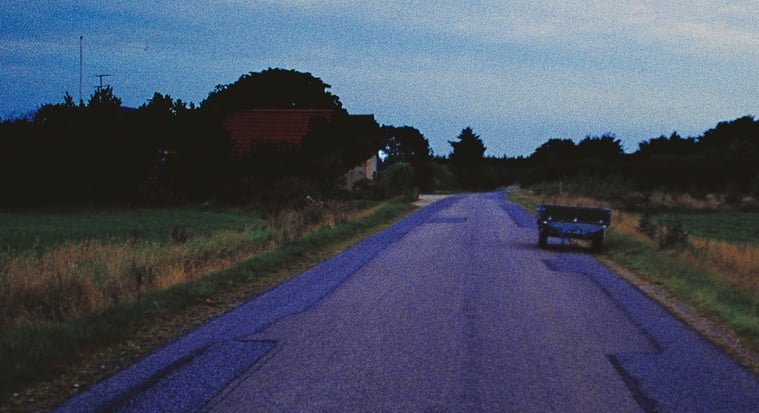
Unmarked or poorly marked obstacles on the road are dangerous, and in darkness and twilight, many pedestrians, parked cars, animals and objects on the road are hit.
Orientation and manoeuvring
You must learn to recognise and manage the same hazardous situations as in daylight. In the dark, you need to drive with heightened awareness of possible danger signs, partly because orientation conditions are impaired.
How to drive and use your lights in the dark and during headlight switch-on time
- Before driving in the dark, make sure your car's lights are illuminated correctly.
- Use the roadway stripes and the reflective edge and background markings to orientate yourself. Remember that bollards on the right side have an orange reflector and those on the left have a white reflector.
- Remember that your orientation options are reduced: Can you stop within the range of the light you're driving with - and within the clear distance ahead?
- On lit roads, use the dipped beam. The position light is only used when parking or stopping.
-On unlit roads, use high beams if your low beams are not sufficient for your speed. Be careful not to dazzle others!
- In fog or heavy rainfall, you can use fog lights. Only use the rear fog light if it is very foggy and only in such a way that it does not dazzle other road users.
- If you need to warn other road users, flash your headlights instead of using your horn. Only use your horn if the danger is imminent.
§ The headlight switch-on time is the time from sunset to sunrise, or when it is required to use headlights due to darkness, fog, haze, rain or other poor visibility or lighting conditions. The purpose is to make the vehicle visible to other road users or to improve your own visibility. Daytime running lights in particular are not strong enough during headlight switch-on time.
And that's what you do in a meeting, by the way:
- Keep an eye out for oncoming traffic or signs that an oncoming vehicle is approaching, such as a flashing light.
- Find a suitable distance to dazzle down to dipped headlights. If the oncoming vehicle is a car or motorbike, downshift approximately 200-300 metres before the meeting, if the oncoming vehicle is a cyclist or moped, downshift approximately 100-150 metres before the meeting.
- Switch to dipped beam at an appropriate distance from trains travelling along the road if there is a risk of the driver being dazzled by the main beam.
- The number and position of the oncoming vehicle's headlights tells you what type of vehicle it is.
- Stop if an oncoming driver blinds you so you can't see.
You can reduce glare by not looking directly into the oncoming driver's headlights.
Look ahead along the right edge of the road:
- This is where the obstacles can be.
- Switch to high beam just before passing oncoming traffic.
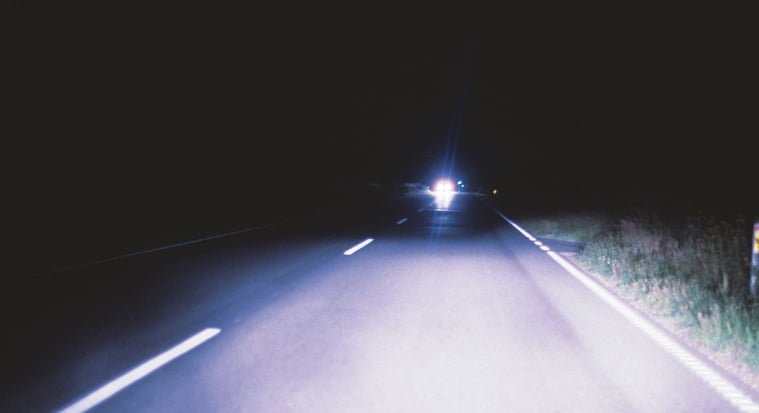
Adjust your speed to match the range of the dipped headlights. Remember that you must be able to stop within this range. If you encounter cars on narrow and completely dark roads, reduce your speed to around 40 km/h to allow you to react and stop for possible obstacles ahead.
When travelling in front of or behind others:
- When overtaking someone in front, judge the distance and find an appropriate time to switch to dipped headlights to avoid dazzling the mirrors.
- Determine the type of vehicle by looking at the number and position of rear lights, as well as any reflectors.
- Keep a greater distance than you would in daylight - the person in front of you also has reduced orientation options.
- Also, orientate yourself to those behind you and their intentions. If someone behind you wants to overtake, keep your high beam on to help with the overtaking. As soon as the overtaking driver is about to pull back into the right lane, switch to dipped headlights.
When overtaking:
- If you want to overtake in the dark, you need to orientate yourself extra well due to poor visibility.
- If you catch up with someone in front that you want to overtake, switch to dipped headlights to avoid dazzling.
- Switch to high beam just before overtaking to ensure you have the best possible conditions. Be careful not to dazzle the person you are overtaking.
When stopping:
- Use the stop light to warn those approaching from behind.
- The position light should only be switched on when stopping or parking on poorly lit roads.
Use of lights during daytime headlight hours:
- Use the dipped headlights as normal.
- Never the position light.
- When it's foggy, hazy, rainy or if visibility is poor.
- If there is dense fog during the day, you may want to use your high beams to be seen.
- Switch on the dipped headlights when driving with the sun low behind you to ensure the orientation of oncoming traffic.
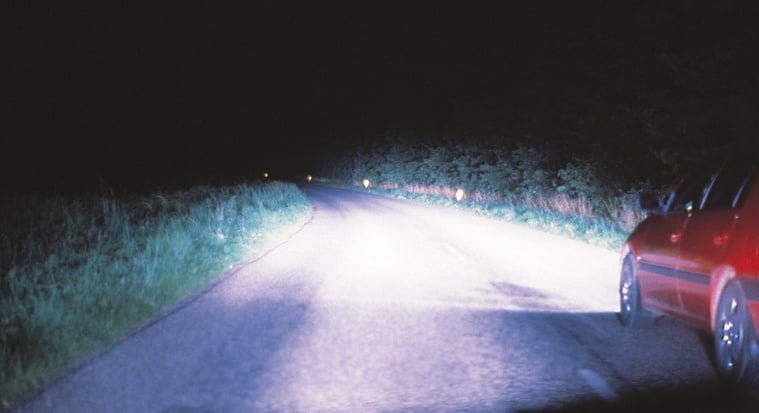
On completely dark roads, you can see and assess the overtaking distance by pulling off to the left and briefly switching on your high beam.
20. Driving in tunnels
Risk conditions
The height of a tunnel can easily vary, so you need to respect the height limitations of tunnels. You also need to be aware of other drivers stopping in the tunnel because they may have broken down or run out of fuel. You may also miss obstacles when entering a tunnel because it takes time for your eyes to adjust to the changing light conditions.
Orientation and manoeuvring
When driving in the tunnel, pay attention to signs showing emergency exits, emergency equipment (fire extinguishers), emergency seating and possibly signs - with the radio frequency you can listen to for information about the tunnel. Many tunnels are equipped with traffic control with lane signals. Pay attention to whether the lane signals change. At a red junction, leave the lane immediately, at a yellow arrow, look for a suitable opportunity to leave the lane. If all lanes are red, no further driving is allowed. You may want to switch on your car radio and listen to the traffic information.
When approaching a tunnel, stop for any red stop signal. You should also remember to switch on your dipped headlights before entering the tunnel, and if you wear sunglasses, remove them before entering the tunnel. Be careful not to enter a tunnel too quickly. Your eyes need time to adjust to the changing light conditions.
When driving in a tunnel, keep a longer safe distance from the vehicle in front than usual. If traffic in the tunnel stops, you may need to switch on the hazard warning lights while braking, stop well away from the car in front and switch off the engine. In case of fire, leave the vehicle and head for the nearest exit or rescue route. In the event of engine failure and other accidents, try to stop at an emergency phone.
There are rarely emergency lanes, so any emergency flashers must be switched on. When calling the emergency call centre, use an emergency phone rather than a mobile phone. In many cases, the right lane will automatically turn red if the alarm cabinet in the tunnel is opened.
Driving by light rail
Risk conditions
Lack of attention to traffic lights and signs, resulting in failure to give way and collision with the light rail.
Lack of attention to the light rail while performing other traffic manoeuvres, resulting in collisions with light rail trains.
Light rail vehicles have a long braking distance, so it is important that other road users pay special attention to light rail vehicles.
Light rail vehicles drive according to conditions, signals and traffic. This means that a light rail vehicle travels according to the speed limits that apply in and outside densely built-up areas. However, the speed of light rail vehicles must not exceed the speed limit for buses (max. 80 km/h).
Accidents
Accidents happen on the light rail when road users misunderstand or ignore the red light signal.
Accidents happen when pedestrians miss the light rail train when crossing the tracks.
Accidents happen to road users who miss the light rail train while manoeuvring their car.
Accidents happen when road users misunderstand or misinterpret the special traffic conditions around the light rail.
Light rail signalling (X 19 Bus and light rail signalling)
The light rail signals are set up in such a way that they are only valid and show signals for drivers of light rail vehicles. Thus, the light rail will only be signalled to move if other signal groups have closed to other traffic that may conflict with the light rail's movement. In practice, this means that other drivers must primarily focus on and follow the markings and signal groups that generally apply to themselves and not those that apply to the light rail.
Motorists should remember that the driver of a light rail vehicle is in principle on an equal footing with other road users, but does not have the same opportunities to take evasive action. Likewise, hard braking can have serious consequences, especially for standing passengers. Therefore, it is crucial for safe traffic flow that drivers and other road users focus on the light rail and show the necessary consideration.
Test your knowledge
Cat. B - Sections 7.18 - 7.21
Select the questions you think are the right ones.

